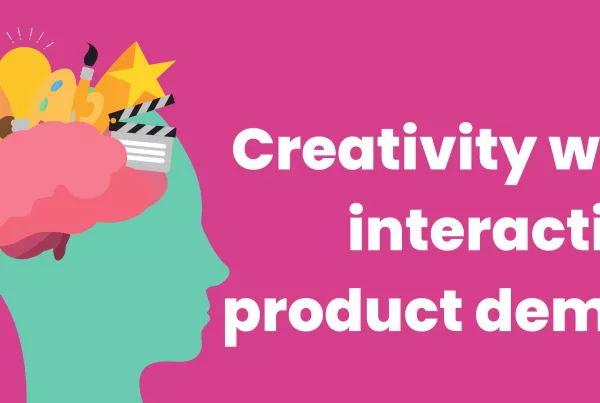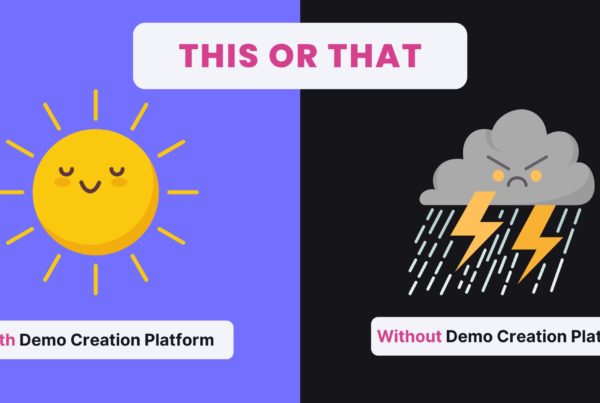Alexa Grabell, CEO of Pocus, hosts PLS AMAs with product-led sales experts to share best practices, frameworks, and insights on this emerging category. These AMAs are an opportunity to ask PLS leaders any question – ranging from hiring to sales compensation to tech stack – in a low-key, casual environment. This is a members-only event for the PLS community, but you can request an invite here.
In the latest installment, Alexa invited GC Lionetti, former CMO at Confluent and VP of Self-Serve Growth at Dropbox.
And with that depth of experience, you can be sure he had lots of interesting insights to share about product-led growth, self-serve motions, and more! Here are my favorite takeaways from the conversation.
GC’s Background in Tech
He was a developer in a previous life and has done stints in account management. Then he found his way to Atlassian and worked there for seven years in their startup days. He held a number of roles there, from sales engineering to running product marketing. But all his roles there were unique because of their bottoms-up self-service sales motion.
From there, he found his way to Dropbox where he worked for five years running growth and monetization, which owned self-serve revenue and included inbound sales as well. After that, he joined Confluent as their “kinda-CMO” and had a fantastic run.
His Self-Serve Assist Team at Dropbox
When he started at Dropbox, he was in charge of this inbound sales motion – but it didn’t fit into the bottoms-up self-serve motion that defined Dropbox, or into the enterprise space either. It was stuck in a strange middle ground. He inherited the group and was asked to figure out what to do with them.
So he picked what he calls Self-Serve Assist. It was a warm lead model with four main components:
- Inbound – a reactive team who tended to the hand-raisers (those who entered the funnel and asked questions through chat and email) and then sent them back into the self-serve funnel
- Outbound – a proactive team with a data-driven motion that mined high value prospects and inserted a person into that motion when effective (they actually ran an experiment against self-serve and decided if you beat it, you can keep it)
- Enterprise lead generation – an easy qualification mechanism where they could ask prospects agreed-upon questions and basically treat them like quasi-SDRs
- Feedback loop – the most critical part of the equation, this created a systematic feedback loop through growth sales and marketing to inform future investments
The team was measured on overall revenue, as well as efficiency. Their whole goal wasn’t to bring in as many people as possible – it was to be as efficient as possible with their time, and send everyone else back to self-serve.
If someone asks you the same question about your product ten times, at first you think, “cool, we want more human-led interactions!” But really it’s probably a bug in the system. So this efficiency component’s goal was partly to extract important information from the Self-Serve Assist team, because they’re talking to customers all the time and seeing these patterns before anyone else.
The Orientation of the SSA Team
GC’s Self-Serve Assist team was intended to have a strong customer service/success component, and it was even a little product-y to some degree. They tried to use data to help the SSA team directionally figure out where users should go, but instead of pushing people to sales, they designed for the flow to naturally lead users to sales instead.
They also wanted to understand who were the right people to send to sales after conversations with customers. SSA had a list of 5-7 questions to ask customers that were ultimately qualifying and made the sales experience optimal.
While they worked with sales, treating the SSA team as pure sales would be a mistake – it requires more thought and is more complicated than that. They’re really best at trying to figure out the best interaction and the best experience to provide for each customer – it might be to direct them back to the self-serve funnel, or sales, or closing them right there. It’s a lot of judgment calls but it’s also data-driven.
How He Developed His Strategy
Really, GC learned along the way. He thought Atlassian did things extremely well and was disciplined and efficient. But they also used a human element as their learning element to some degree, and structured teams around learning from humans. They’re still doing this today at a different scale.
He always looked at consumer companies as a model as well. Spotify was the only company he could find that had a conversion team – their whole goal was to figure out how to monetize consumers with automation or a human touch. He spent a lot of time talking with people there which helped him build an experimental mindset for running a team, even a sales team.
And he made plenty of it up along the way as well. He says if someone tells you they’ve figured out a PLG motion, it’s probably unique to that one business. He tried a lot to plug and play things from Atlassian to Dropbox, and 70% of the time that didn’t work. He’s now big on setting milestones along the way and building to that instead of trying to plug and play.
Getting Your Free Funnel to Work
One of the biggest PLG questions right now is how to move a free user into a monetized one? It can be through:
- Paywalls
- Education (not a hard sell, but using new content to educate new users)
- Reminding people of your value
On that last point, GC says it’s easy for your free users to forget how much value you’re offering them. He talked to people who used Dropbox to run their entire business for years without giving the company a dollar, and when reminded of the value they got most will actually pay. They’re not trying to get out of paying – they’re just using 50 different tools and aren’t thinking regularly about how important your product is to them.
Thanks for the insights, GC!
Read the original AMA recap from Pocus on their blog – the Pocus Post.





